I Can’t Drive 55… But Neither Can Any Driver in Antarctica
McMurdo Station is an area akin to a college campus, with almost everything you would need within walking distance. In fact, quite a few days were spent walking in a perpetual cycle from my dorm building, to the Galley for meals, to Crary Lab for work and then back to the dorm. Oftentimes, I would accompany Carol to visit a storage shed for materials and supplies, to the NSF Chalet to complete paperwork regarding my stay in Antarctica, or to the helipad for scheduled helicopter flights. All of these excursions, in addition to my daily routine, were also within walking distance. However, this is not to say that everything Carol and I needed to carry out our field work could be done by walking. On the contrary, there were many times that vehicles were required, especially to haul the rather extensive array of heavy materials, hardware and supplies to the AWS sites.
Vehicles are a mandatory way of life in order to conduct research in Antarctica. But I never thought that I would be asked to drive. It was the last thing I thought I would ever be asked to do. When I arrived at McMurdo Station, my first week consisted of several days of training, including the operation of light motor vehicles which consist of trucks and vans. Again, it was the last thing I would ever envision doing until…

During my first week at McMurdo Station, I quickly took notice of the various types of vehicles in operation and began to wonder just how many types of vehicles there were and what their primary purposes were. I made an appointment to speak with Tony Buchanan, Supervising Manage of the vehicle fleet to learn more about these vehicles so I could report about them in a journal entry. In our conversation, I wanted to find out the following items for each of the major types of operating vehicles: name, unique features, uses, maximum speed, and miles per gallon.
Ford F-350 Pickup
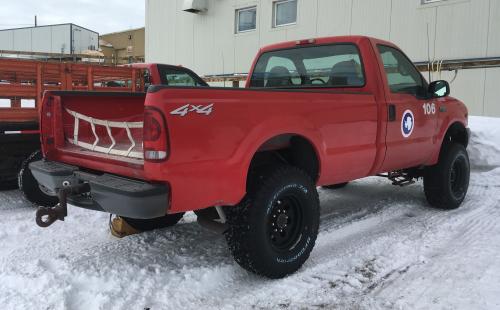
Unique Features: Its larger tires provide a larger footprint which results in a lower ground pressure.
Uses: This vehicle can carry up to three people in the cab and one ton in cargo and supplies.
Maximum Speed: 100 miles per hour (although the maximum speed limit of any vehicle operating in Antarctica is 25 miles per hour).
Miles per Gallon: 15 miles per gallon.
Before I go any further, I would like to take this opportunity to provide an explanation to a term found within this entry because, as you will see later in this journal entry, it will be a primary feature of all of the vehicles that drive on icy terrain. The term that I would like to elaborate on is “lower ground pressure.”
The Physics of Ground Pressure
Ground pressure is a physical quantity defined by a force that is exerted over a surface area. The force in this case is the weight of the vehicle and the surface area is the “footprint” or the area of the object that makes contact with the ground. In equation form, the ground pressure can be expressed as Force/Surface Area. Because surface area is in the denominator or the bottom of the fraction, the smaller the surface area, the larger the pressure. Conversely, the larger the surface area, the lower the pressure. It is possible to control the size of the ground pressure not through the force or weight of the vehicle but rather by its contact area. For example, the simplest example of ground pressure is that of a standing person who exerts a force that is equal to his or her weight through the soles of their shoes. When a person goes from standing on two legs to suddenly standing on one, the surface area that the person exerts on the ground is now halved, which in turn doubles the ground pressure. So, because it is preferable to minimize ground pressure while driving on icy terrain, the vehicles are equipped with wheels that have a larger contact area or footprint and hence lower ground pressure.
Mattracks Vehicle
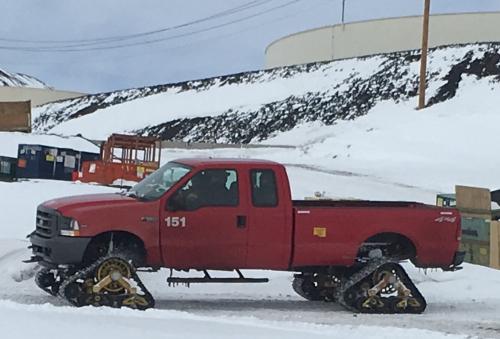
Unique Features: The tank treads yield a larger footprint, resulting in a lower ground pressure.
Uses: This vehicle can transport people to places where there are no roads.
Maximum Speed: 40 miles per hour (although the maximum speed limit of this vehicle is 16 miles per hour).
Miles per Gallon: 7 miles per gallon.
Hägglund Personnel Transport Vehicle
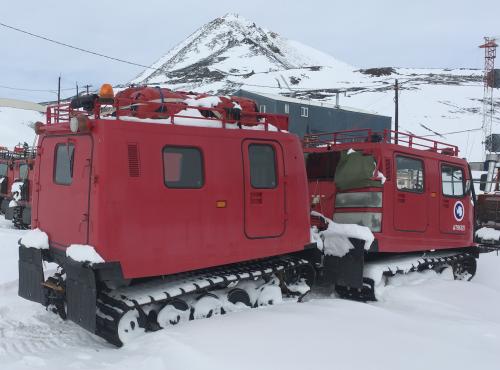
Unique Features: It is an articulated all-terrain, amphibious vehicle. There are two of these vehicles on base: Hansel and Gretel. Hansel is a specially equipped vehicle designed for Search and Rescue operations.
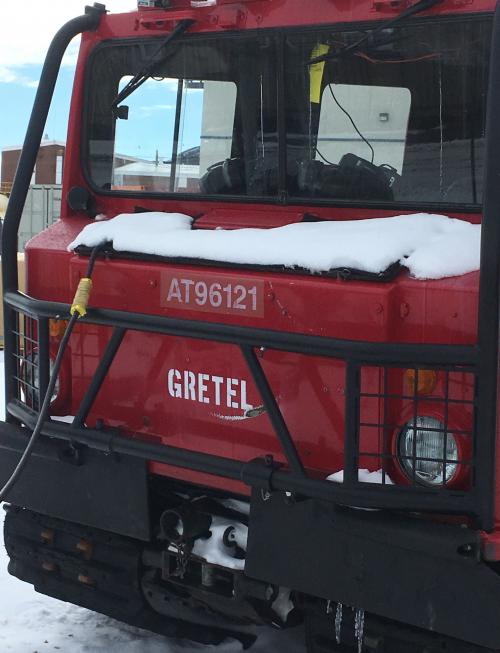
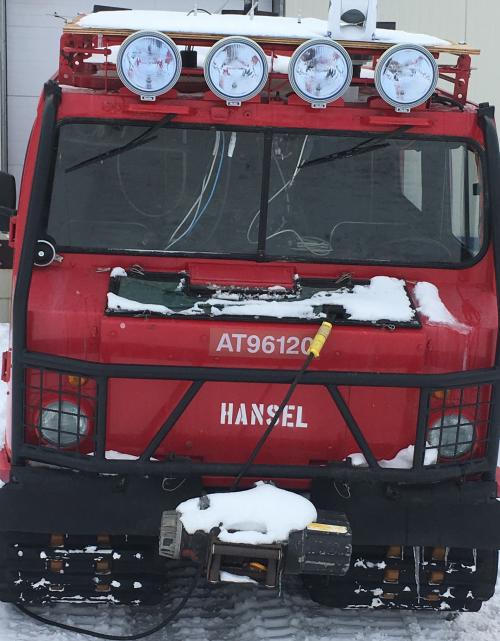
Uses: This vehicle can transport nine passengers in back and six passengers in front.
Maximum Speed: 45 miles per hour.
Miles per Gallon: 5 miles per gallon.
Tucker Sno Cat Vehicle
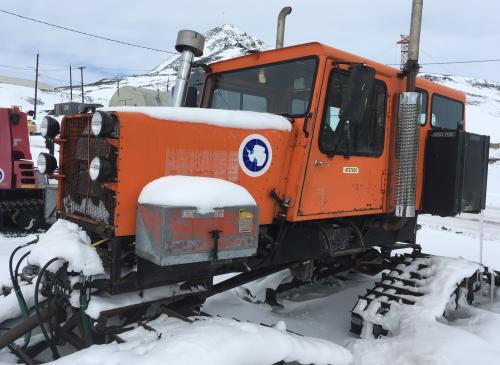
Unique Features: Everyday operation of this vehicle requires three hours of maintenance. This vehicle costs about $300,000.
Uses: This vehicle is used for grooming runways at field camps.
Maximum Speed: 10 miles per hour.
Miles per Gallon: 2 miles per gallon.
PistenBully Vehicle
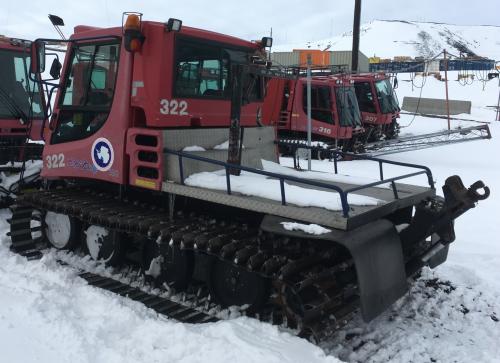
Unique Features: This vehicle has high floatation and, next to the snowmobiles, it can travel over ice.
Uses: This vehicle transports people and gear away from town to sea ice in a traverse.
Maximum Speed: 16 miles per hour.
Miles per Gallon: 7 miles per gallon.
As you look at the information provided above on each of the five types of vehicles, one thing that is particularly surprising is the rather low miles per gallon rating for the vehicles. These vehicles are very efficient under the conditions that they perform but require an enormous amount of fuel to be able to operate on a frequent basis.
And now, a question from the curious mind of Kiwi:
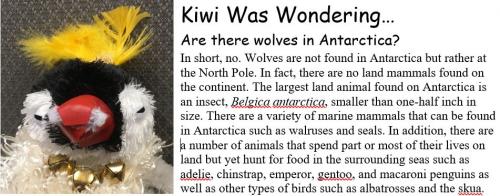
Coming Up Next: The day came and it was time to say goodbye. The day and the journey that took a little more (well, okay a lot more) than a day to make it home!


Comments